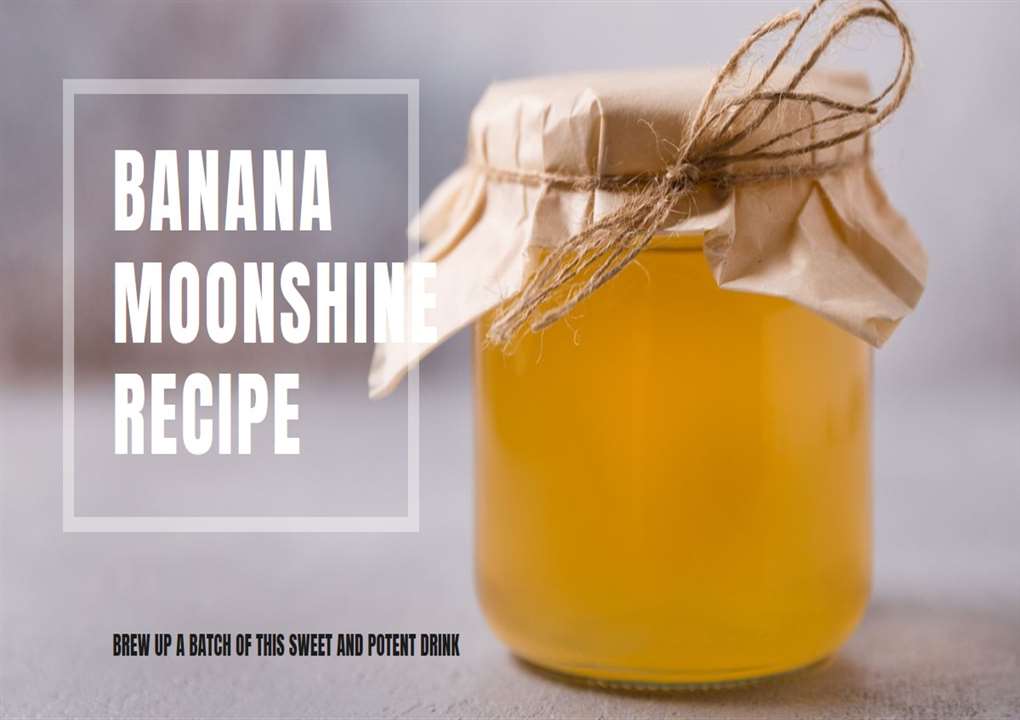Have you ever wondered how to make your own Banana Moonshine Recipe? It’s not as complicated as it sounds, and the results are incredibly rewarding. Imagine sipping on a smooth, sweet spirit that you crafted yourself. In this guide, we’ll walk you through the entire process of making banana moonshine at home, from gathering ingredients to distilling the final product. Let’s dive in!
What is Banana Moonshine?
Before we get into the nitty-gritty, let’s talk about what banana moonshine actually is. Essentially, it’s a homemade spirit made from fermented bananas. Moonshine, traditionally an illicitly distilled liquor, has a rich history in American culture. Nowadays, people make it legally for personal enjoyment. The banana adds a unique twist, offering a sweet and fruity flavor that sets it apart from other types of moonshine.
Why Make Banana Moonshine?
Why not just buy a bottle of liquor from the store? Well, making banana moonshine is a fun and rewarding hobby. It allows you to experiment with flavors and create something truly unique. Plus, it makes for an impressive homemade gift or a special treat for gatherings.
Ingredients and Equipment
Ingredients
To make banana moonshine, you’ll need the following ingredients:
- 25 pounds of ripe bananas
- 10 pounds of sugar
- 10 gallons of water
- 1 packet of distiller’s yeast
Equipment
Here’s the equipment you’ll need:
- Large fermentation vessel
- Heat source (like a stove or hot plate)
- Large pot for boiling
- Siphon tube
- Distillation apparatus
- Hydrometer (to measure alcohol content)
- Glass bottles for storage
Preparing the Mash
Selecting and Preparing Bananas
Start by choosing ripe bananas. The riper, the better, as they contain more sugar which will help with fermentation. Peel and mash the bananas in a large pot. This part can get a bit messy, but it’s crucial to break down the bananas as much as possible.
Adding Sugar and Water
Next, add the sugar to the mashed bananas. Stir it thoroughly to ensure the sugar is evenly distributed. Then, pour in the water and continue to stir until everything is well mixed. This mixture is called the “mash.”
Heating the Mash
Heat the mash over a medium flame, bringing it to a boil. This step helps to break down the bananas further and ensures that the sugar dissolves completely. Once it reaches a boil, reduce the heat and let it simmer for about 30 minutes. Be sure to stir occasionally to prevent sticking.
Fermentation Process
Cooling and Adding Yeast
After simmering, remove the mash from the heat and let it cool to room temperature. This is important because adding yeast to a hot mixture can kill the yeast. Once cooled, add the packet of distiller’s yeast and stir well.
Fermenting the Mash
Transfer the mash to your fermentation vessel. Cover it loosely to allow gases to escape and store it in a warm, dark place. Fermentation will take about one to two weeks. You’ll know it’s done when bubbles stop forming and the mash has a slightly sour smell.
Distillation
Setting Up the Still
Distillation can be a bit tricky, but with patience, you can master it. Set up your still according to the manufacturer’s instructions. Make sure all connections are secure to avoid any leaks.
First Distillation
Siphon the fermented mash into the still, being careful to leave any sediment behind. Heat the mash slowly. The first liquid that comes out, called the “foreshots,” should be discarded as it contains methanol, which is toxic. Once the temperature stabilizes, you’ll collect the “hearts,” which is the good stuff you want. Continue distilling until the alcohol content drops.
Second Distillation (Optional)
For a smoother finish, you can run the collected “hearts” through the still a second time. This step isn’t necessary but can improve the flavor and clarity of your moonshine.
Bottling and Aging
Bottling
Once distillation is complete, use a hydrometer to measure the alcohol content. Dilute if necessary to achieve your desired strength. Then, bottle your banana moonshine in clean, sterilized glass bottles.
Aging (Optional)
While you can enjoy your moonshine immediately, aging it for a few weeks to a few months can enhance the flavor. Store the bottles in a cool, dark place and give them a gentle shake every few days.
Enjoying Your Banana Moonshine
Your homemade banana moonshine is now ready to enjoy! Sip it straight, mix it into cocktails, or share it with friends. The sweet, fruity flavor of bananas makes this moonshine unique and delicious.
Conclusion
Making banana moonshine at home is a fun and rewarding project. From selecting the bananas to savoring the final product, every step of the process is a labor of love. Whether you’re an experienced distiller or a curious beginner, this guide has all the information you need to create your own batch of banana moonshine. So why not give it a try? Cheers to your homemade spirit!
For more ideas, recipes, and cooking tips and tricks, please visit us at Melbourne’s Winter Wonderland.
FAQs About Banana Moonshine Recipe
Is it legal to make banana moonshine at home?
In many places, distilling alcohol at home without a license is illegal. Always check your local laws and regulations before attempting to make moonshine.
Can I use a different type of fruit?
Absolutely! You can experiment with different fruits like apples, peaches, or berries to create unique flavors.
How do I know when fermentation is complete?
Fermentation is usually complete when bubbles stop forming in the mash and it has a slightly sour smell.
What should I do if my moonshine tastes off?
If your moonshine has an unpleasant taste, it could be due to impurities in the mash or errors in the distillation process. Consider distilling it again or adjusting your recipe.
Can I drink the foreshots?
No, the foreshots contain methanol, which is toxic. Always discard the first portion of distillate to ensure your moonshine is safe to drink.

